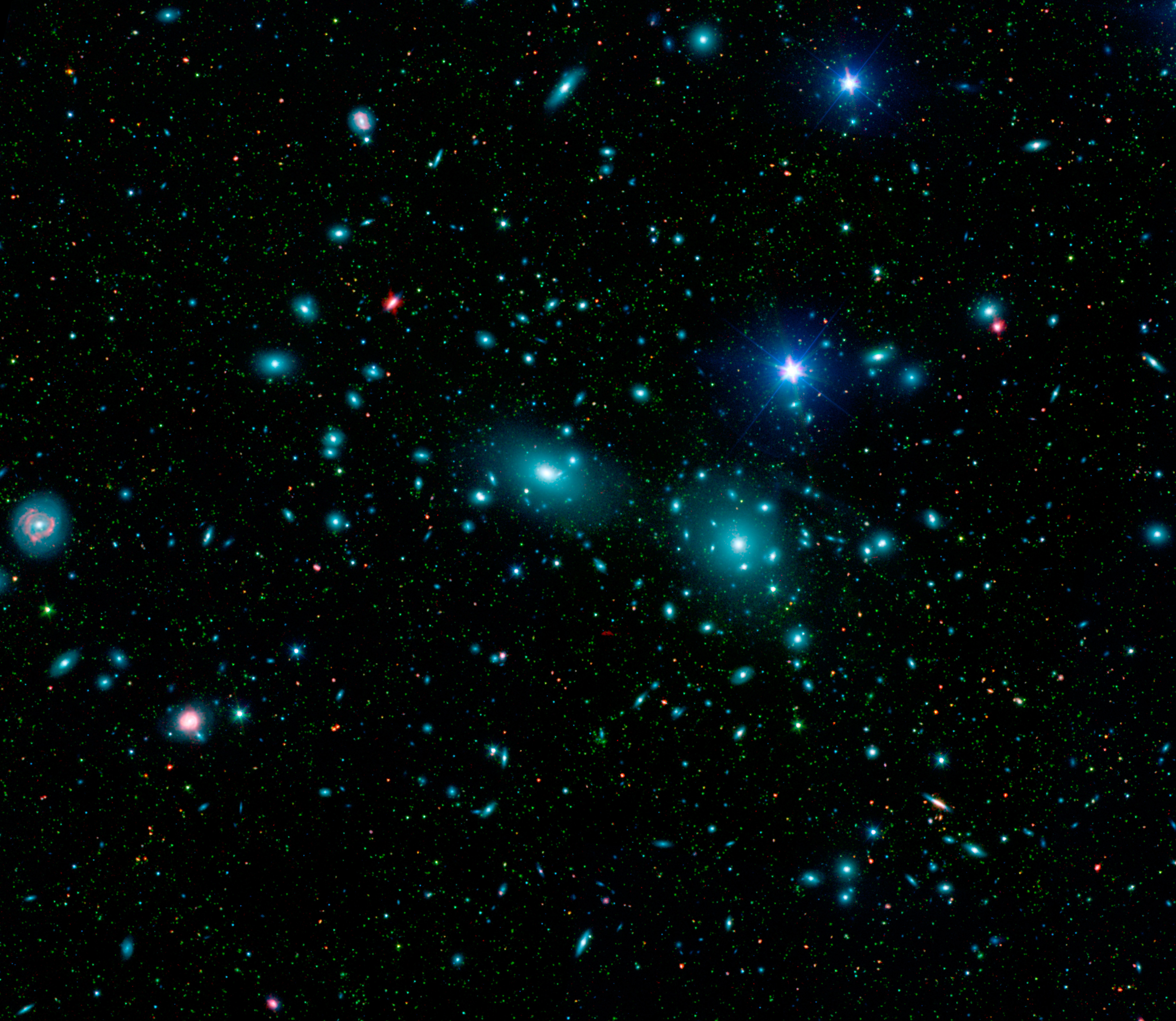Galaxy group blasts out record-breaking tail of hot gas after gobbling up neighbor (video)
The Coma cluster didn't even say excuse me.
A monstrously large cluster of galaxies is devouring a nearby smaller galactic grouping, causing it to blast out a record-breaking tail of hot gas from its rear. At 1.5 million light-years-long, the tail is the largest tendril of gas ever seen emerging from a galactic group.
Astronomers had previously seen the tail behind NGC 4839 but had estimated it to be just around one million light-years long, a size more in keeping with the gas tails seen around other similar events that tend to be between 800,000 and one million light-years long.
Observations of the feeding cluster and its unfortunate cosmic prey made with NASA's Chandra X-ray Observatory and other telescopes didn't just prove that the tail is a cosmic record breaker, however, but could also reveal to scientists how these huge conglomerations of galaxies grow.
Related: Galactic collisions act as a 'cosmic delivery service' for hungry monster black holes

The Coma cluster, located around 340 million light-years away from Earth, is one of the largest galactic clusters known to astronomers containing around 1,000 individual galaxies. The cluster is steadily growing as another galaxy group, called NGC 4839, is falling into it at a rate of millions of miles per hour.
Galactic groups like NGC 4839 contain around 50 galaxies, while galactic clusters like the Coma cluster can contain hundreds or even thousands of galaxies, according to a statement from the Chandra X-Ray Observatory. One thing these different-sized collections of galaxies have in common is the huge amounts of superheated gas that envelop them. Though nebulous and diffuse, these clouds of gas still account for a great deal of the mass in both galaxy clusters and groups, and that means studying this gas is vital in understanding them.
The absorption of NGC 4839 by the Coma cluster could help astronomers understand the processes galaxy groups undergo as they merge. As NGC 4839 moves to the center of the cluster that is swallowing it, the galactic group is being stripped of its gas envelope as it collides with the hot gases of the larger cluster. This violent process is what is creating the massive gas tail behind NGC 4839, which is hot enough to glow brightly.
Get the Space.com Newsletter
Breaking space news, the latest updates on rocket launches, skywatching events and more!

The brightness of the tail, which is long enough to stretch between the sun and the nearest star to our solar system and back again hundreds of thousands of times over, offers astronomers a unique opportunity to study the physics at play in such events. This is before the tail mixes with the huge reservoir of gas of the Coma cluster and cools to the point that it is too faint to be seen.
The team of astronomers studied the gas in front of NGC 4839, finding shock waves that indicate that the galactic grouping is moving into the Coma cluster at a speed of around 3 million miles per hour (4.8 million km/h), or about 4,000 times as fast as the speed of sound.
The scientists also examined the level of turbulence in the tail of gas, which indicated that heat conduction in NGC 4839 is low. While observing the tail, the scientists found structures on one side of the gas called Kelvin-Helmholtz instabilities. These instabilities are often caused by adjacent layers moving gas or fluid traveling at different speeds and, in this case, indicate the presence of either a weak magnetic field or a low level of viscosity in the tail, a measure of how a fluid resists flowing (so water has a lower viscosity than molasses).
The team's research was presented by the University of Alabama at Huntsville's Stephen Walker on Tuesday (June 6) at the 242nd meeting of the American Astronomical Society in Albuquerque, New Mexico.
The findings are also detailed in a paper published on the open-source research repository ArXiv.
Join our Space Forums to keep talking space on the latest missions, night sky and more! And if you have a news tip, correction or comment, let us know at: community@space.com.

Robert Lea is a science journalist in the U.K. whose articles have been published in Physics World, New Scientist, Astronomy Magazine, All About Space, Newsweek and ZME Science. He also writes about science communication for Elsevier and the European Journal of Physics. Rob holds a bachelor of science degree in physics and astronomy from the U.K.’s Open University. Follow him on Twitter @sciencef1rst.









